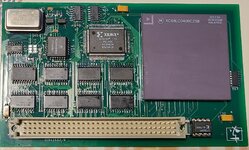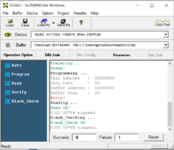DrGonzo
Active member
So, in tandem with building a couple of Performer 68030 boards for my SEs, I also put together a couple of the Tokamac-LC boards for my LCIIs. Everything is in and together, but I'm really struggling to get the XC1736 programmed. After determining that they weren't supported by my TL866Plus, I went out and snagged a Xeltek 280U which states it supports them. The SuperPro software does list them and will even do a blank check and read from the chips. However, whenever I try to write them it just throws an error. Anyone run into this and, if so, have any idea what I could be missing here?
Thanks in advance!
~Dr. G


Thanks in advance!
~Dr. G



